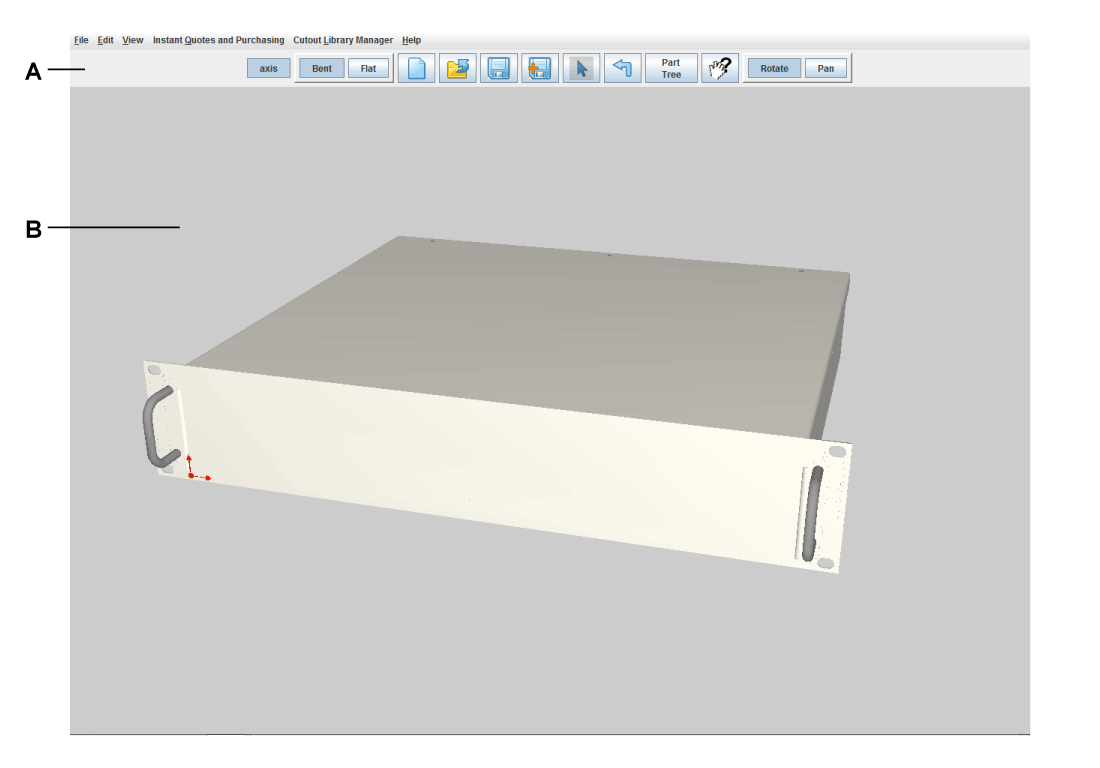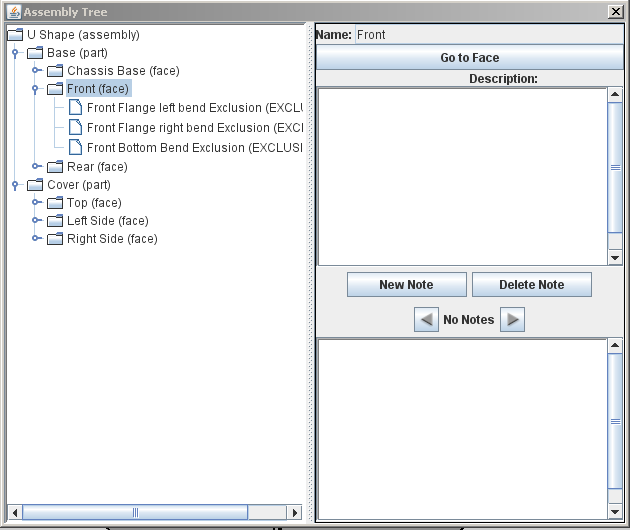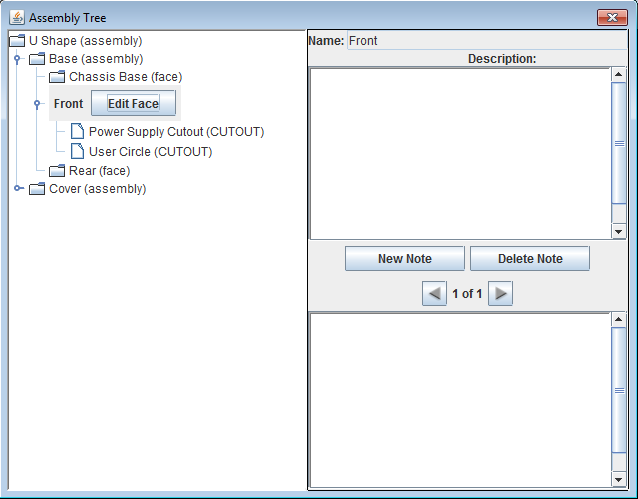Difference between revisions of "3D View Window"
m (→Rotate model) |
m (→Creating, opening, saving assembly files) |
||
| Line 7: | Line 7: | ||
<br> | <br> | ||
| − | =Creating, opening, saving assembly files= | + | =Creating, opening, and saving assembly files= |
Enclosures are saved as Protocase Designer Assembly files (.pda file extension). | Enclosures are saved as Protocase Designer Assembly files (.pda file extension). | ||
<br> | <br> | ||
Revision as of 15:22, 1 October 2013
Contents
3D View Window overview
The 3D View window displays a 3D model of your enclosure that you can manipulate.
- A—3D View Toolbar
- B—Viewport
Creating, opening, and saving assembly files
Enclosures are saved as Protocase Designer Assembly files (.pda file extension).
Create new assembly file
Open an existing assembly file
Save the current assembly file
Save a copy of the current assembly file
Changing enclosure properties
At any point after you create a new enclosure you can modify your enclosure properties such as size, thickness, material, and colour. Template:Procedure
- Note: The size of your enclosure must meet all the manufacturing constraints listed at the bottom of the dialog box.
Viewing the model
There are several controls to allow viewing and manipulating the 3D model of your enclosure.
Rotate model
The Rotate command spins the model around its center. Template:Procedure
Pan model
The Pan command enables moving the model about the plane of the viewport.
To pan the model, do one of the following:
Method 1
Template:Procedure
Method 2
Template:Procedure
Method 3
Template:Procedure
Zoom model
The Zoom command controls the visual size of the model displayed within the viewport. Template:Procedure
- Note: The model zooms in/out from the centre of the viewport, regardless of the pointer location.
Show/Hide Parts
The Show/Hide Parts command allows for viewing inside the model by hiding one or more parts. Template:Procedure
Toggle flat/bent view
The Toggle Flat and Bent commands displays the enclosure parts as they are laid out prior to the bending process during manufacturing.
Note: This feature is for reference only and does not affect the manufacturing of the final enclosure.
Template:Procedure
Reset view
The Reset View command displays the model in the center of the viewport in its original orientation. Template:Procedure
Use Transparency
The transparency option makes exclusion zones and the background of silkscreen images transparent. This allows you to view features that may be hidden behind exclusion zones or silkscreen images. Template:Procedure
- Note: Turning on the transparency option does not affect the final product.
Change background color
The Change background color command allows for customizing the background color of the viewport. Template:Procedure
Change axis color
The Change Axis Color command allows for customizing the color of the coordinate system axis displayed on the model. Template:Procedure
Editing a face using the Face Editor
To customize your enclosure, you add features such as cutouts, silkscreen, exclusion zones, and construction lines to a face in the Face Editor Window.
To open the Face Editor:
Template:Procedure
See Face Editor Window for details on using the Face Editor.
Viewing the Part Tree
The Part Tree shows a hierarchical list of all the faces and objects in your enclosure. You can change the name and description of objects as well as open a face in the Face Editor Window directly from the Part Tree.
Change object name and description
Add/Delete notes
You can add notes to parts, faces, and objects for your own reference or to provide additional information to technical support such as "Please scrub this with a scouring pad". You can also use it to place features that might not be permitted in Protocase Designer® but can be manufactured with certain restrictions. For example, you could create a circle using construction lines near the edge of a face on the exclusion zone (where you wouldn't normally be able to place a self-clinching standoff) and add a note "Add 6-32 x 3/8" standoff here". Template:Procedure
Editing a face from the Part Tree
- Note: The Part Tree window can also be accessed from the Face Editor Window.
Main Window Preferences
You can change the background color and the axis color in the main window viewport.
See Face Editor Preferences for changing the background color and axis color. The same Preferences dialog box is accessed from the Main window or Face Editor Window.


